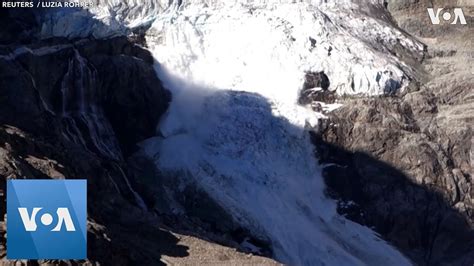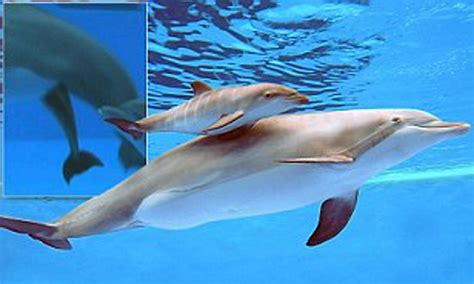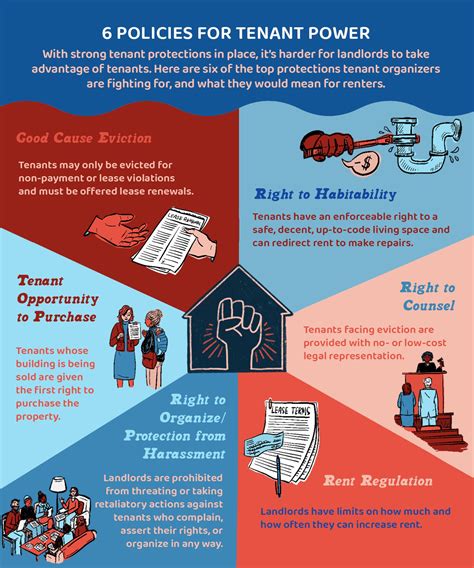
A significant portion of the Trift Glacier in Switzerland detached and plummeted down a mountainside on Wednesday, creating a dramatic spectacle captured on video. The event, characterized by a massive release of ice and debris, has prompted concerns about glacial stability amid rising global temperatures.
The dramatic collapse, which occurred in the Swiss Alps, sent a cascade of ice and rock tumbling down the steep slopes. According to reports, the detachment involved a substantial volume of glacial ice, resulting in a powerful and visually striking event. While no injuries have been reported, the incident underscores the increasing risks associated with glacial melt and instability in high-altitude regions. The video footage of the collapse quickly circulated online, drawing attention to the tangible impacts of climate change on the world’s glaciers.
Details of the Collapse
The Trift Glacier, located in the Swiss Alps, is one of many glaciers worldwide that have been experiencing accelerated melting due to climate change. The collapse on Wednesday involved a significant portion of the glacier’s ice mass, which broke away and cascaded down the mountainside. The event was captured on video, showing a massive cloud of ice and debris descending at high speed.
“It was an impressive event to witness,” said a local observer who captured the video, as reported by various news outlets. “The sheer scale of the icefall was quite remarkable and demonstrates the power of nature.”
The detachment is attributed to a combination of factors, including rising temperatures, which weaken the structural integrity of the ice, and the steepness of the terrain. Glaciologists have been monitoring the Trift Glacier and other glaciers in the region, noting increased rates of melting and changes in ice structure that contribute to instability.
Impact and Response
The immediate impact of the glacier collapse was localized to the immediate vicinity of the mountainside. The release of ice and debris posed a risk to any hikers or climbers in the area, although no injuries have been reported. Local authorities have issued warnings to stay clear of the affected area and are assessing the potential for further collapses.
The incident also highlights broader concerns about the long-term impacts of glacial melt on water resources and infrastructure. Glaciers serve as natural reservoirs, storing water in the form of ice and releasing it gradually during the warmer months. As glaciers shrink, the timing and volume of water runoff can change, affecting water availability for agriculture, industry, and domestic use.
Glacial Melt and Climate Change
The collapse of the Trift Glacier is part of a larger trend of accelerated glacial melt worldwide. According to the Intergovernmental Panel on Climate Change (IPCC), glaciers are losing mass at an increasing rate due to rising global temperatures. The IPCC’s Sixth Assessment Report states that “glaciers and snow cover have declined in almost all regions across the globe since the 1970s, and these declines are projected to continue.”
The melting of glaciers contributes to sea-level rise, alters regional water cycles, and increases the risk of hazards such as glacial lake outburst floods and landslides. In the European Alps, glaciers have lost approximately half of their volume since the late 19th century, and further losses are projected in the coming decades.
Scientific Perspectives
Glaciologists emphasize that the collapse of the Trift Glacier is a clear indication of the ongoing impacts of climate change on mountain environments. “Glacier collapses are becoming more frequent and more severe as temperatures rise,” said Dr. Andreas Vieli, a glaciologist at the University of Zurich. “The warming climate is destabilizing glaciers, making them more prone to sudden collapses.”
Scientists use a variety of methods to monitor glaciers, including satellite imagery, ground-based measurements, and computer models. These tools help them track changes in ice thickness, flow velocity, and surface elevation, providing insights into the health and stability of glaciers.
“Monitoring glaciers is crucial for understanding the impacts of climate change and for developing strategies to adapt to these changes,” said Dr. Matthias Huss, a glaciologist at ETH Zurich. “We need to continue to invest in research and monitoring to better understand the complex processes that govern glacier behavior.”
The Future of Glaciers
The future of glaciers in the Swiss Alps and around the world depends on efforts to reduce greenhouse gas emissions and limit global warming. The Paris Agreement, an international accord aimed at addressing climate change, sets a goal of limiting global warming to well below 2 degrees Celsius above pre-industrial levels, with efforts to limit warming to 1.5 degrees Celsius.
Achieving these goals will require significant reductions in emissions from all sectors of the economy, including energy, transportation, and agriculture. It will also require investments in renewable energy, energy efficiency, and other climate solutions.
“The fate of glaciers is closely linked to our ability to address climate change,” said Dr. Vieli. “If we can reduce emissions and limit warming, we can slow the rate of glacial melt and preserve these important natural resources for future generations.”
However, even with significant emissions reductions, some glacial melt is inevitable due to the warming that has already occurred. Adaptation measures, such as improving water management and developing early warning systems for glacial hazards, will be essential to mitigate the impacts of glacial melt on communities and ecosystems.
The Trift Glacier in Context
The Trift Glacier is located near Gadmen in the Bernese Alps of Switzerland. It is known for its dramatic landscape and the Trift Bridge, one of the longest and highest pedestrian suspension bridges in the Alps, which offers views of the glacier. The glacier has been a popular destination for tourists and hikers, but its accessibility has been affected by the ongoing melt and instability.
The Trift Glacier has been retreating rapidly in recent decades, and its size has decreased significantly. The recent collapse is a stark reminder of the vulnerability of glaciers to climate change and the potential for sudden and dramatic events.
Long-Term Implications
The long-term implications of glacial melt extend beyond the immediate impacts on water resources and hazards. Glaciers play a role in regulating regional climate patterns and supporting unique ecosystems. The loss of glaciers can disrupt these systems, leading to cascading effects on biodiversity and ecosystem services.
In addition, glacial melt contributes to sea-level rise, which threatens coastal communities and ecosystems around the world. The IPCC projects that sea levels could rise by several feet by the end of the century, depending on future emissions scenarios.
Global Perspective
The situation with the Trift Glacier is not unique. Glaciers in other parts of the world, including the Himalayas, the Andes, and the Arctic, are also experiencing accelerated melting. The impacts of glacial melt are felt globally, affecting water resources, sea levels, and climate patterns.
The international community is working to address climate change through various initiatives, including the Paris Agreement and the Sustainable Development Goals. However, more ambitious action is needed to reduce emissions and limit warming to levels that can protect glaciers and other vulnerable ecosystems.
Local Reactions
The collapse of the Trift Glacier has prompted a range of reactions from local residents and authorities. Many express concern about the impacts of climate change on their communities and livelihoods. Others emphasize the need for action to reduce emissions and protect the environment.
Local authorities are working to monitor the situation and assess the risks associated with glacial melt. They are also implementing measures to adapt to the changing conditions, such as improving water management and developing early warning systems.
Environmental Concerns
Environmental organizations have raised concerns about the broader implications of glacial melt for biodiversity and ecosystem health. Glaciers support unique ecosystems that are home to specialized plants and animals. The loss of glaciers can lead to the loss of these habitats and the extinction of species.
Environmental groups are advocating for policies that reduce emissions and protect glaciers and other vulnerable ecosystems. They are also working to raise awareness about the impacts of climate change and to mobilize action to address the crisis.
Economic Impacts
The economic impacts of glacial melt can be significant, affecting tourism, agriculture, and other sectors. Glaciers attract tourists who come to see the dramatic landscapes and engage in outdoor activities such as hiking and skiing. The loss of glaciers can reduce tourism revenues and affect local economies.
In addition, glacial melt can affect agriculture by altering water availability for irrigation. Changes in water runoff patterns can lead to droughts or floods, which can damage crops and reduce yields.
Future Research Directions
Future research on glaciers will focus on improving our understanding of the complex processes that govern glacier behavior and on developing more accurate projections of future glacial melt. This research will involve a combination of field observations, remote sensing, and computer modeling.
Key areas of research include:
- Understanding the role of different factors, such as temperature, precipitation, and ice dynamics, in controlling glacier melt rates.
- Developing improved methods for monitoring glaciers, including the use of satellite imagery and ground-based sensors.
- Creating more sophisticated computer models that can simulate glacier behavior under different climate scenarios.
- Assessing the impacts of glacial melt on water resources, hazards, and ecosystems.
- Developing strategies for adapting to the impacts of glacial melt, such as improving water management and developing early warning systems.
Lessons Learned
The collapse of the Trift Glacier provides several important lessons about the impacts of climate change and the need for action. These lessons include:
- Climate change is already having significant impacts on mountain environments, including the accelerated melting of glaciers.
- Glacial melt can lead to sudden and dramatic events, such as glacier collapses, which pose risks to communities and ecosystems.
- Glacial melt has long-term implications for water resources, sea levels, and climate patterns.
- Addressing climate change requires ambitious action to reduce greenhouse gas emissions and limit global warming.
- Adapting to the impacts of climate change is essential, even if emissions are reduced.
- Monitoring glaciers and conducting research are crucial for understanding the impacts of climate change and for developing effective adaptation strategies.
Conclusion
The dramatic collapse of the Trift Glacier serves as a stark reminder of the accelerating impacts of climate change on the world’s glaciers. The event highlights the urgent need for global action to reduce greenhouse gas emissions and mitigate the effects of warming temperatures. As glaciers continue to melt at an alarming rate, the consequences for water resources, sea levels, and ecosystem stability will become increasingly severe. The scientific community emphasizes the importance of continued research, monitoring, and international cooperation to address this critical challenge and safeguard the future of these vital natural resources.
Frequently Asked Questions (FAQ)
-
What caused the collapse of the Trift Glacier?
The collapse of the Trift Glacier was primarily caused by rising temperatures due to climate change, which has weakened the structural integrity of the ice. This, combined with the steepness of the terrain, made the glacier more prone to sudden collapses. As the ice melts, it destabilizes the glacier’s structure, leading to large portions breaking off.
-
Were there any injuries or fatalities resulting from the glacier collapse?
According to current reports, there were no injuries or fatalities as a direct result of the Trift Glacier collapse. Local authorities issued warnings to stay clear of the affected area, and the event was closely monitored to ensure public safety.
-
What are the long-term implications of glacial melt in the Swiss Alps?
The long-term implications of glacial melt in the Swiss Alps include altered water runoff patterns affecting water availability for agriculture, industry, and domestic use. It also increases the risk of hazards such as glacial lake outburst floods and landslides. Additionally, the loss of glaciers can disrupt regional climate patterns and impact unique ecosystems, leading to biodiversity loss.
-
How is climate change affecting glaciers globally?
Climate change is causing glaciers worldwide to melt at an accelerated rate. Rising global temperatures weaken the ice structure, leading to mass loss and increased instability. This contributes to sea-level rise, alters regional water cycles, and increases the frequency of glacial hazards. The IPCC reports that glaciers have declined in almost all regions since the 1970s, with projections indicating further losses.
-
What measures can be taken to mitigate the impacts of glacial melt?
To mitigate the impacts of glacial melt, it is essential to reduce greenhouse gas emissions and limit global warming, as outlined in the Paris Agreement. This involves transitioning to renewable energy sources, improving energy efficiency, and implementing sustainable land management practices. Adaptation measures, such as improving water management, developing early warning systems for glacial hazards, and investing in infrastructure resilient to climate change, are also crucial.









